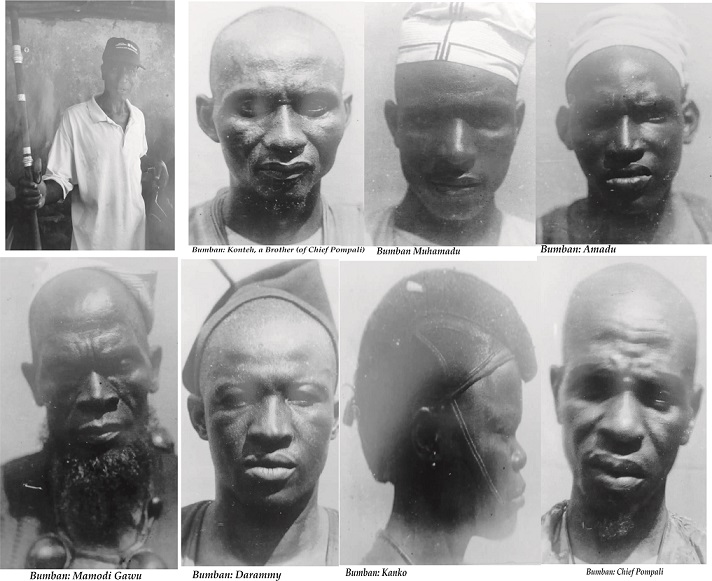Nightwatch newspaper team recently went on a visit to Bumban Town, the citadel of Biriwa Chiefdom, Bombali District, Northern Sierra Leone.
The hilly and mountainous village located at the foot of impressively crafted mountains with the shape of lion, is situated a little over one hundred and fourteen miles (114) from Freetown.
Geopolitically, Bumban is now a section among the several sections constituting Biriwa Chiefdom.
The historical importance of the town cannot just be reduced to a section, says Chief Yayah 111 of Bumban section.
He told nightwatch that Bumban is the shinning citadel of Biriwa and that the great warrior, Alimamy Suluku, who fought alongside Bai Bureh in the 18th century Hut Tax War against the British, had Bumban as his home town. Almost all the lineages of Chiefs that have ruled Biriwa such as the Pompoli and others, had passed through the great Bumban.
Nightwatch was shown the famous cotton tree and graves or if you like, the homes of fallen chiefs of the area.The famous cotton tree overlooking the town is the symbol of Biriwa says Chief Yayah 111 of Bumban.
Kamabai, he continued, is the chiefdom headquarter town of Biriwa, but Bumban remains the political dynasty of Biriwa. Chief Yayah 111 told nightwatch that he is the third in the Yayah lineage after his late father and uncle Yayah1st and 2nd respectively had ruled the section.
History has reported that the prowess of Chief Alimamy Suluku of Biriwa led him to be remembered in the country’s history as one of the great warriors that fought British imperialism and indirect rule in British Colonial Sierra Leone.
Chief Alimamy Suluku was notable for providing a very strong resistance to the British who had earlier introduced or extended their control to the hinterland/protectorate as a result of the scramble for and partition of Africa in 1844.
Various Chiefs that ruled Biriwa after the demise of Suluku are proud of his warlike character and the annals of history are very rich with records of Chief Suluku of the Great Biriwa Empire.
His sons and daughters and other distant relatives are all in the United Kingdom, America and other places across Europe after acquiring education and other forms of civilization.
Biriwa has also had a rich educational history with the earlier establishment of the first schools in Bombali District. This was largely influenced by Wesleyan missionaries who had come to settle in Biriwa and other places in the north.
This led to the establishment of a number of schools, churches and hospitals serving humanity. This explains why a very good number of people from Safroko and the neighboring areas of Koinadugu had their education in Biriwa and Kamabai.
Chief Yayah says this pride has dwindled over the years even though the descendants are fighting hard to restore the lost glory. Political upheavals over the last years between the Limbas and the Mandigos over chieftaincy rights has left many people wounded and property destroyed.
The authorities and Police in the area are battling to contain skirmishes largely resulting from confrontations between normadic cattle rearers from the minority Mandigo tribe and Limba agricultural farmers.
The farmers are complaining about the wanton destruction of their crops by the large number of cattle in the area.
The normadic cattle rearers are issued with licenses by the authorities incharge to rear cattle in the area. They pay royalties and surface rent to land owners and chiefdom authorities.
Fighting has erupted between the two tribes severally leading to deaths and destruction of property. With all these attendant problems, Bumban and Biriwa remain very historic in Sierra Leone post-independence history, especially due to the existence of the great Suluku of Biriwa Empire.
Bumban the Shining Citadel of Biriwa Kingdom


